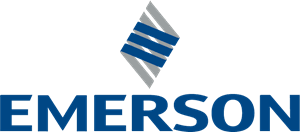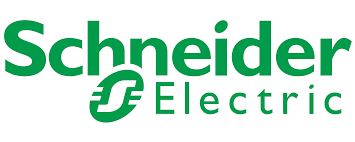The Composable Applications Market is expected to register a CAGR of 17.3% from 2025 to 2031, with a market size expanding from US$ XX million in 2024 to US$ XX Million by 2031.
The report is segmented by Offering (Platform And Services), Vertical (BFSI, Retail & eCommerce, Government, Healthcare & Life Sciences, Manufacturing, IT & ITeS, Energy & Utilities, Others). The global analysis is further broken-down at regional level and major countries. The report offers the value in USD for the above analysis and segments
Purpose of the Report
The report Composable Applications Market by The Insight Partners aims to describe the present landscape and future growth, top driving factors, challenges, and opportunities. This will provide insights to various business stakeholders, such as:
- Technology Providers/Manufacturers: To understand the evolving market dynamics and know the potential growth opportunities, enabling them to make informed strategic decisions.
- Investors: To conduct a comprehensive trend analysis regarding the market growth rate, market financial projections, and opportunities that exist across the value chain.
- Regulatory bodies: To regulate policies and police activities in the market with the aim of minimizing abuse, preserving investor trust and confidence, and upholding the integrity and stability of the market.
Composable Applications Market Segmentation
Offering
- Platform
- Services
Vertical
- BFSI
- Retail & eCommerce
- Government
- Healthcare & Life Sciences
- Manufacturing
- IT & ITeS
- Energy & Utilities
You will get customization on any report - free of charge - including parts of this report, or country-level analysis, Excel Data pack, as well as avail great offers and discounts for start-ups & universities
Composable Applications Market: Strategic Insights

-
Get Top Key Market Trends of this report.This FREE sample will include data analysis, ranging from market trends to estimates and forecasts.
Composable Applications Market Growth Drivers
- Increased Demand for Agility and Flexibility: One of the key drivers for the growth of composable applications is the need for agility in application development. Traditional monolithic applications, where all functions are tightly integrated, often lead to slower development cycles and more challenging updates or modifications. Composable applications, on the other hand, allow organizations to use independent, modular components that can be swapped in and out with minimal disruption. This flexibility enables businesses to adapt quickly to changing market demands, customer needs, and technological advancements, leading to faster innovation.
- Cost Efficiency and Resource Optimization: Composable applications provide significant cost efficiencies by allowing organizations to leverage existing microservices and software components rather than building entire systems from scratch. By reusing pre-built components, businesses can avoid the need for redundant development efforts and reduce overall costs. Additionally, composable applications can be more easily scaled and maintained, which further optimizes resource allocation. These cost-saving benefits are especially attractive to organizations looking to maximize their return on investment in application development.
- Rise of Microservices Architecture: The widespread adoption of microservices architecture is another major driver of the composable applications market. Microservices allow software to be broken down into smaller, manageable services that can function independently. These microservices can then be combined and recombined to create a composable application that is highly customizable and adaptable. The shift towards microservices architecture is providing organizations with the flexibility to quickly build, deploy, and modify applications, leading to the growing popularity of composable solutions.
Composable Applications Market Future Trends
- Integration with Artificial Intelligence (AI) and Machine Learning (ML): The future of composable applications is expected to include deeper integration with AI and ML technologies. AI and ML can enhance composable applications by providing intelligent decision-making capabilities, predictive analytics, and personalized user experiences. For example, AI-driven microservices can be integrated into composable applications to enhance automation, optimize workflows, and improve customer engagement. This convergence of AI and composable architecture will drive further innovation in various industries, including e-commerce, healthcare, and finance.
- Low-Code/No-Code Platforms: The rise of low-code/no-code platforms is significantly influencing the composable applications market. These platforms allow users with little or no coding experience to create and deploy applications by simply assembling pre-built components. As these platforms become more sophisticated, they will enable a wider range of users, including business analysts and non-technical professionals, to build composable applications. This democratization of application development will further accelerate the adoption of composable architectures, particularly among small and medium-sized enterprises (SMEs) looking to create custom applications quickly and cost-effectively.
- Cloud-Native and Serverless Computing: The shift toward cloud-native and serverless computing models is another important trend shaping the composable applications market. Cloud-native architectures are designed to take full advantage of the cloud environment, enabling scalable and flexible deployment of applications. Serverless computing, which abstracts infrastructure management, allows developers to focus solely on writing code without worrying about server maintenance. These technologies align perfectly with the composable approach, as they facilitate the seamless integration and scaling of individual components, further boosting the efficiency and agility of composable applications.
Composable Applications Market Opportunities
- Customization in E-Commerce and Retail: One of the significant opportunities in the composable applications market lies in e-commerce and retail. Businesses in this sector are increasingly looking for ways to provide personalized, flexible experiences for customers. Composable applications allow e-commerce platforms to integrate various services such as product catalogs, payment gateways, and customer support tools, creating tailored experiences that can adapt to changing consumer behaviors. Retailers can also rapidly experiment with new features or business models without needing to overhaul their entire infrastructure.
- Healthcare and Telemedicine: In the healthcare industry, composable applications can revolutionize patient care by enabling the integration of various health data systems, telemedicine platforms, electronic health records (EHR), and diagnostic tools. The ability to mix and match components allows healthcare providers to create customized applications that fit their specific needs, improving operational efficiency and patient outcomes. As telemedicine and remote healthcare services continue to grow, the demand for composable healthcare applications will likely increase.
- Financial Services and Insurtech: The financial services and insurtech sectors present significant opportunities for composable applications. These industries require highly customized solutions for risk management, regulatory compliance, and customer engagement. Composable applications can help financial institutions and insurers integrate multiple third-party services, streamline workflows, and improve the customer experience. With the rise of digital banking, mobile payments, and personalized insurance offerings, composable solutions will play a key role in the evolution of these industries.
Composable Applications Market Regional Insights
The regional trends and factors influencing the Composable Applications Market throughout the forecast period have been thoroughly explained by the analysts at The Insight Partners. This section also discusses Composable Applications Market segments and geography across North America, Europe, Asia Pacific, Middle East and Africa, and South and Central America.
Composable Applications Market Report Scope
| Report Attribute | Details |
|---|---|
| Market size in 2024 | US$ XX million |
| Market Size by 2031 | US$ XX Million |
| Global CAGR (2025 - 2031) | 17.3% |
| Historical Data | 2021-2023 |
| Forecast period | 2025-2031 |
| Segments Covered |
By Offering
|
| Regions and Countries Covered |
North America
|
| Market leaders and key company profiles |
|
Composable Applications Market Players Density: Understanding Its Impact on Business Dynamics
The Composable Applications Market is growing rapidly, driven by increasing end-user demand due to factors such as evolving consumer preferences, technological advancements, and greater awareness of the product's benefits. As demand rises, businesses are expanding their offerings, innovating to meet consumer needs, and capitalizing on emerging trends, which further fuels market growth.

- Get the Composable Applications Market top key players overview
Key Selling Points
- Comprehensive Coverage: The report comprehensively covers the analysis of products, services, types, and end users of the Composable Applications Market, providing a holistic landscape.
- Expert Analysis: The report is compiled based on the in-depth understanding of industry experts and analysts.
- Up-to-date Information: The report assures business relevance due to its coverage of recent information and data trends.
- Customization Options: This report can be customized to cater to specific client requirements and suit the business strategies aptly.
The research report on the Composable Applications Market can, therefore, help spearhead the trail of decoding and understanding the industry scenario and growth prospects. Although there can be a few valid concerns, the overall benefits of this report tend to outweigh the disadvantages.
Frequently Asked Questions
What are the options available for the customization of this report?
What are the deliverable formats of the composable applications market report?
What are the future trends of composable applications market?
What are the driving factors impacting global composable applications market?
What is the expected CAGR of composable applications market?
- Historical Analysis (2 Years), Base Year, Forecast (7 Years) with CAGR
- PEST and SWOT Analysis
- Market Size Value / Volume - Global, Regional, Country
- Industry and Competitive Landscape
- Excel Dataset
Recent Reports
Testimonials
Reason to Buy
- Informed Decision-Making
- Understanding Market Dynamics
- Competitive Analysis
- Identifying Emerging Markets
- Customer Insights
- Market Forecasts
- Risk Mitigation
- Boosting Operational Efficiency
- Strategic Planning
- Investment Justification
- Tracking Industry Innovations
- Aligning with Regulatory Trends






















 Get Free Sample For
Get Free Sample For